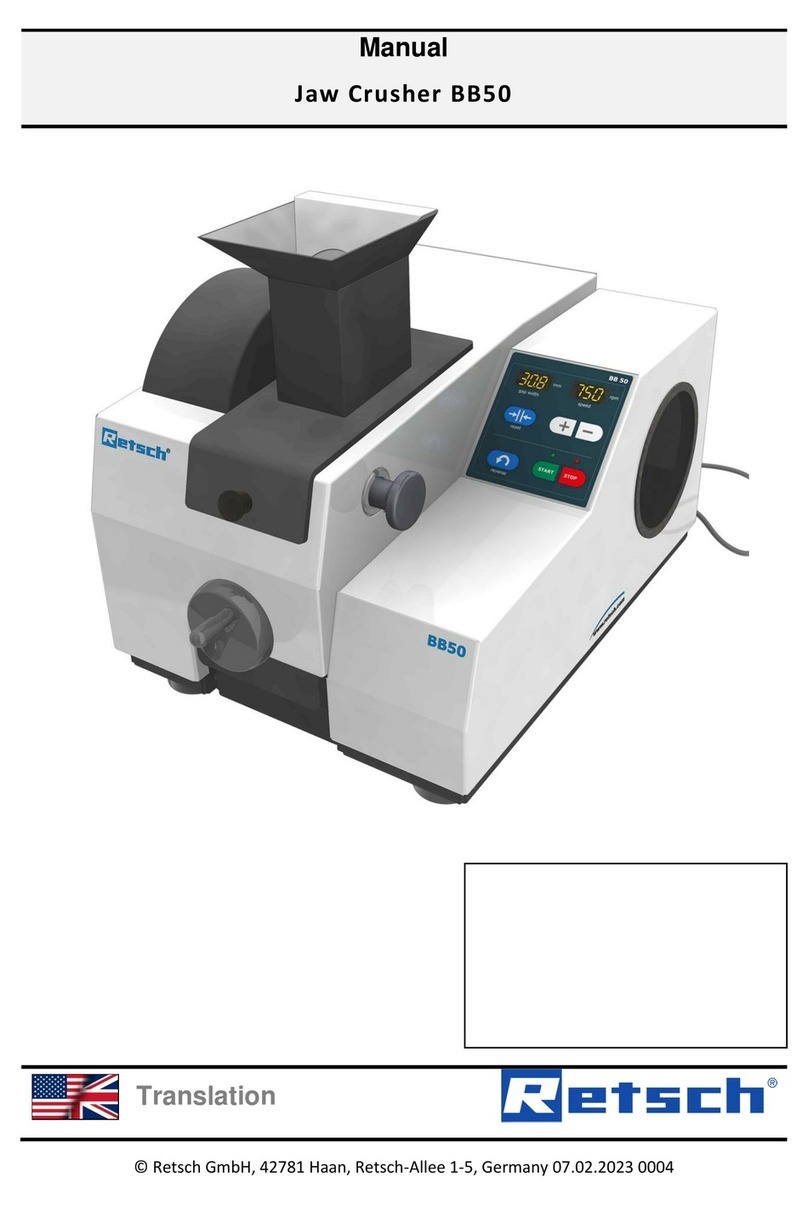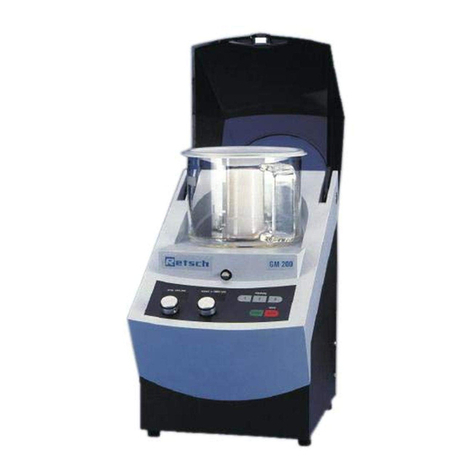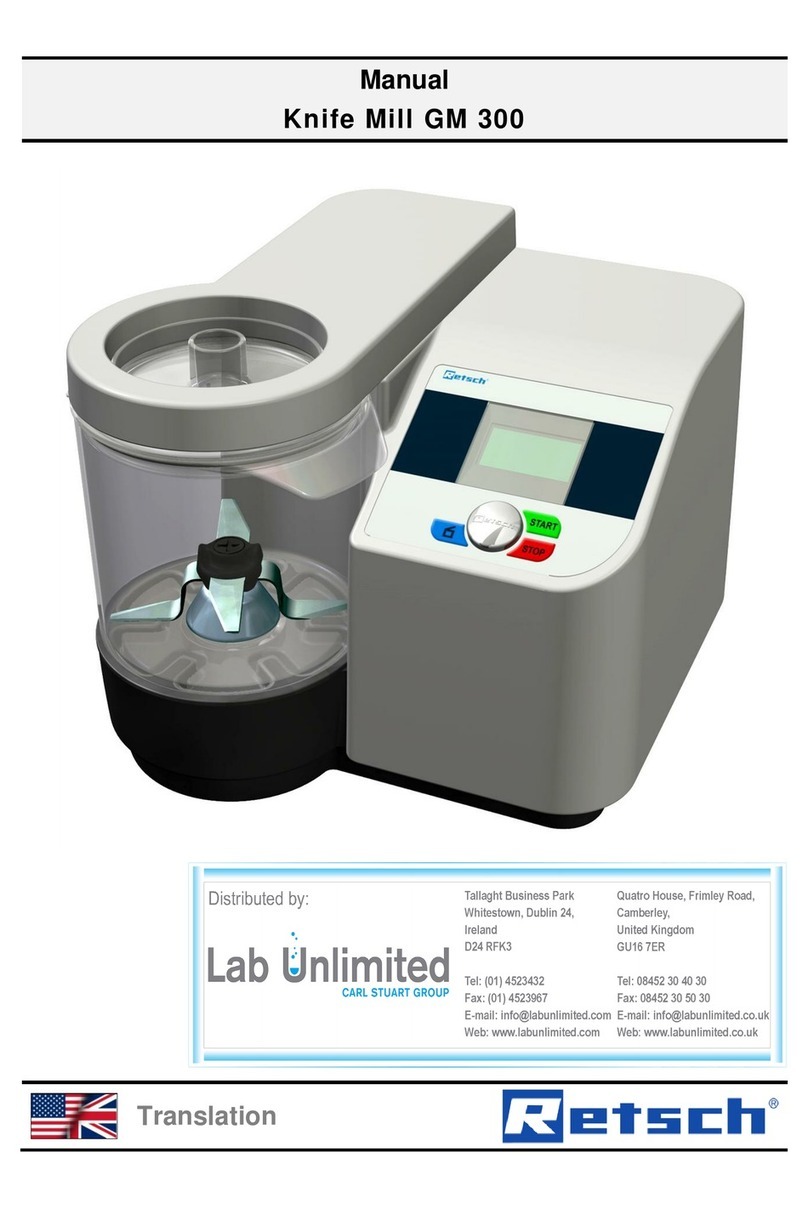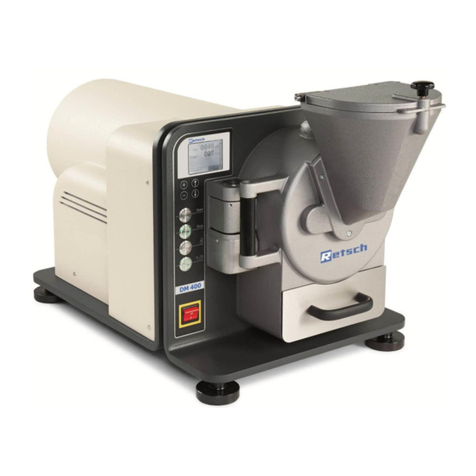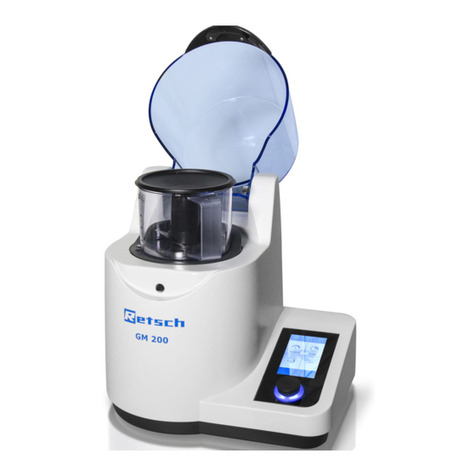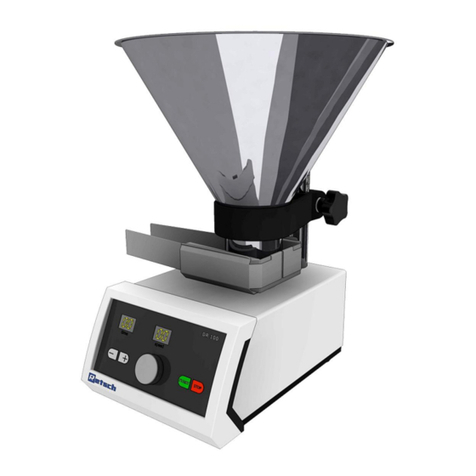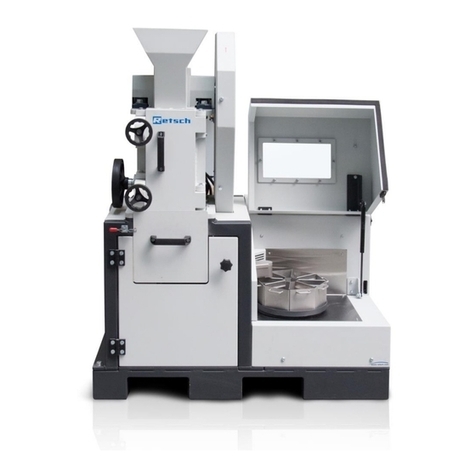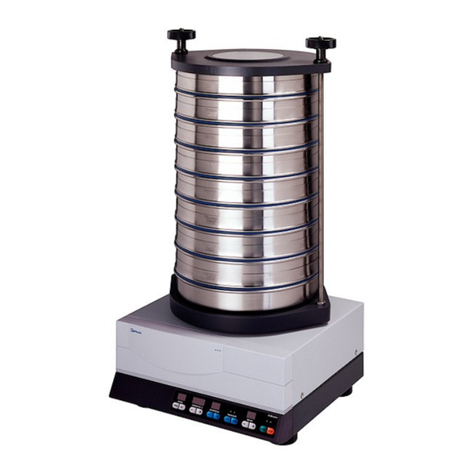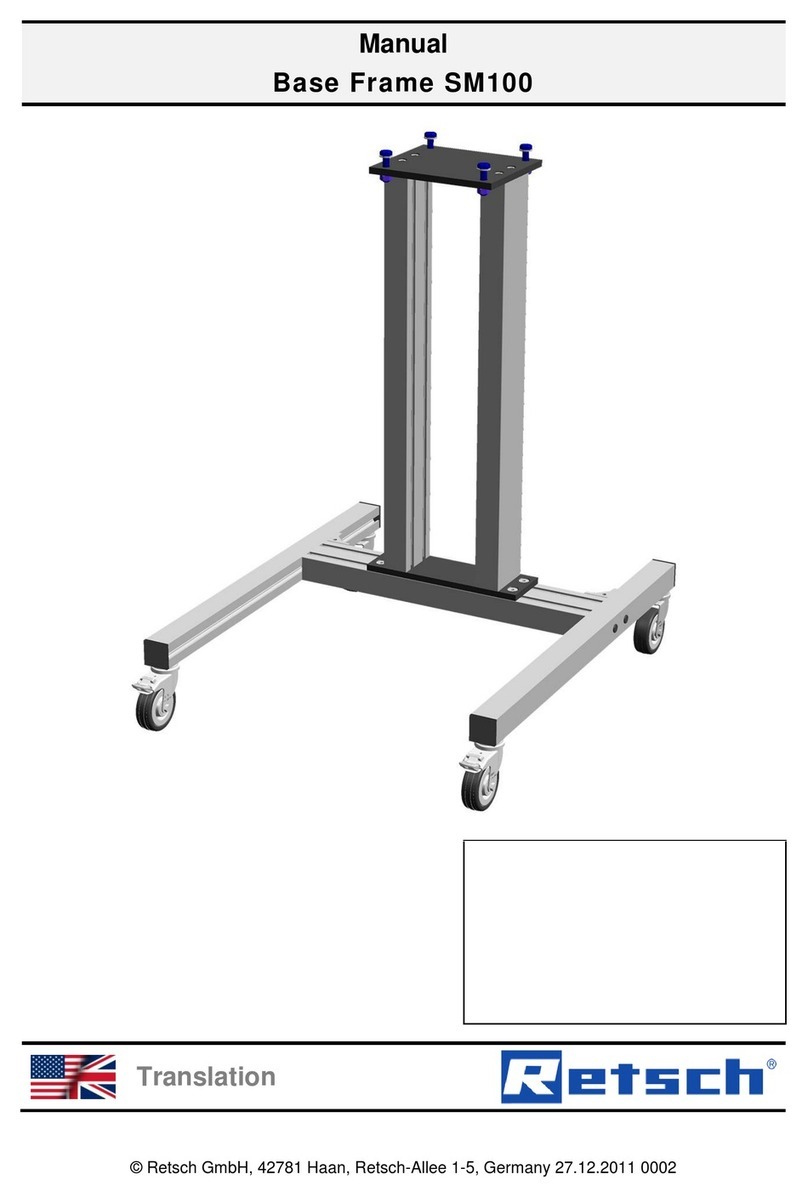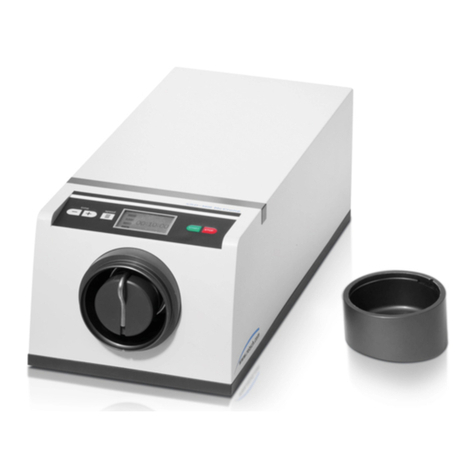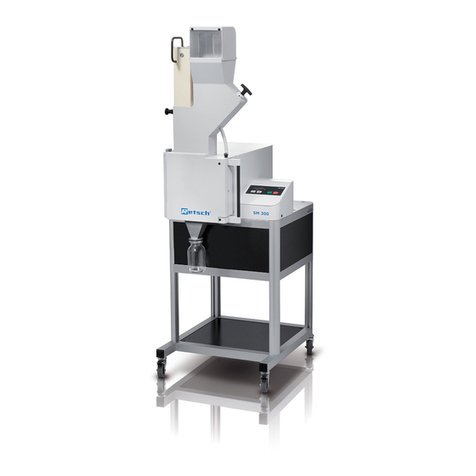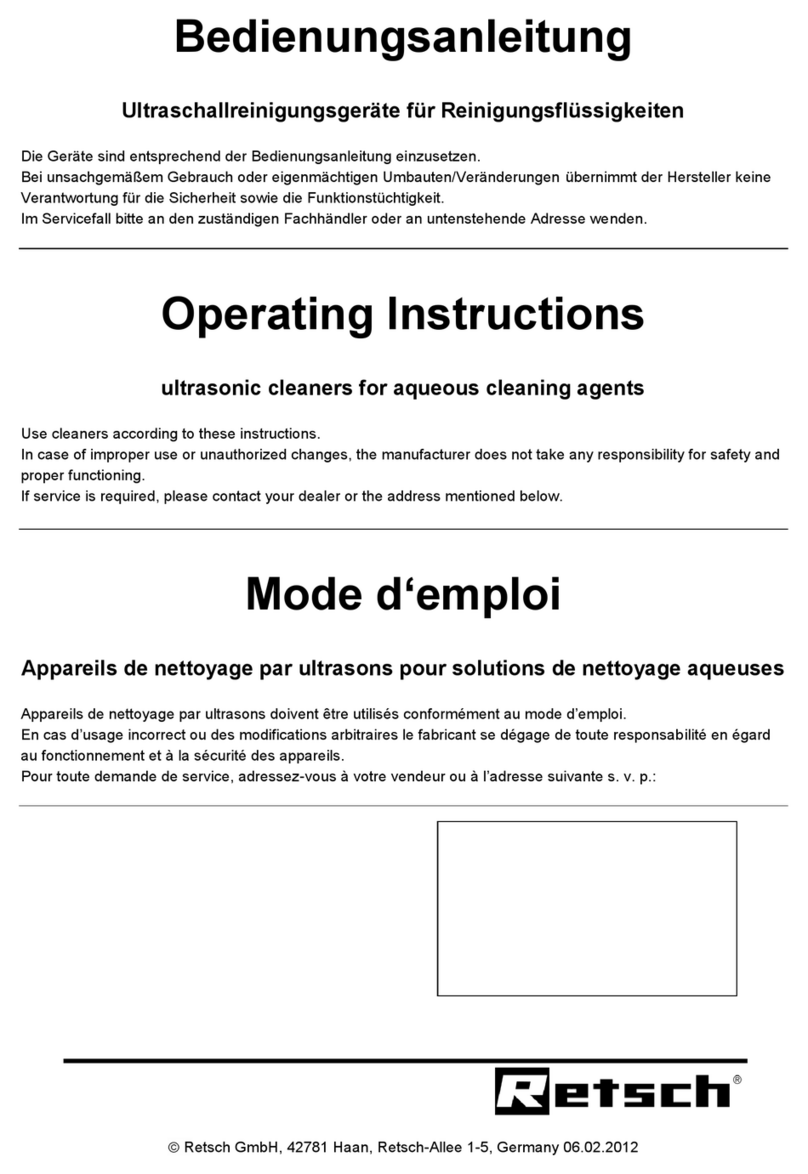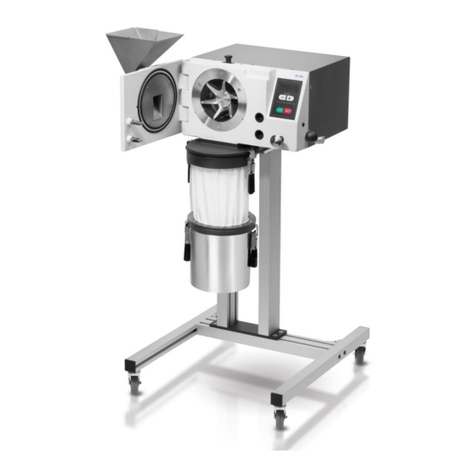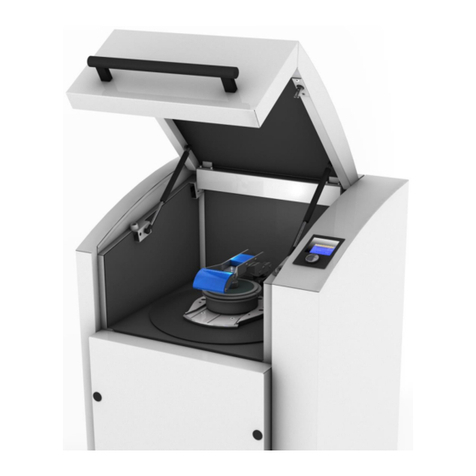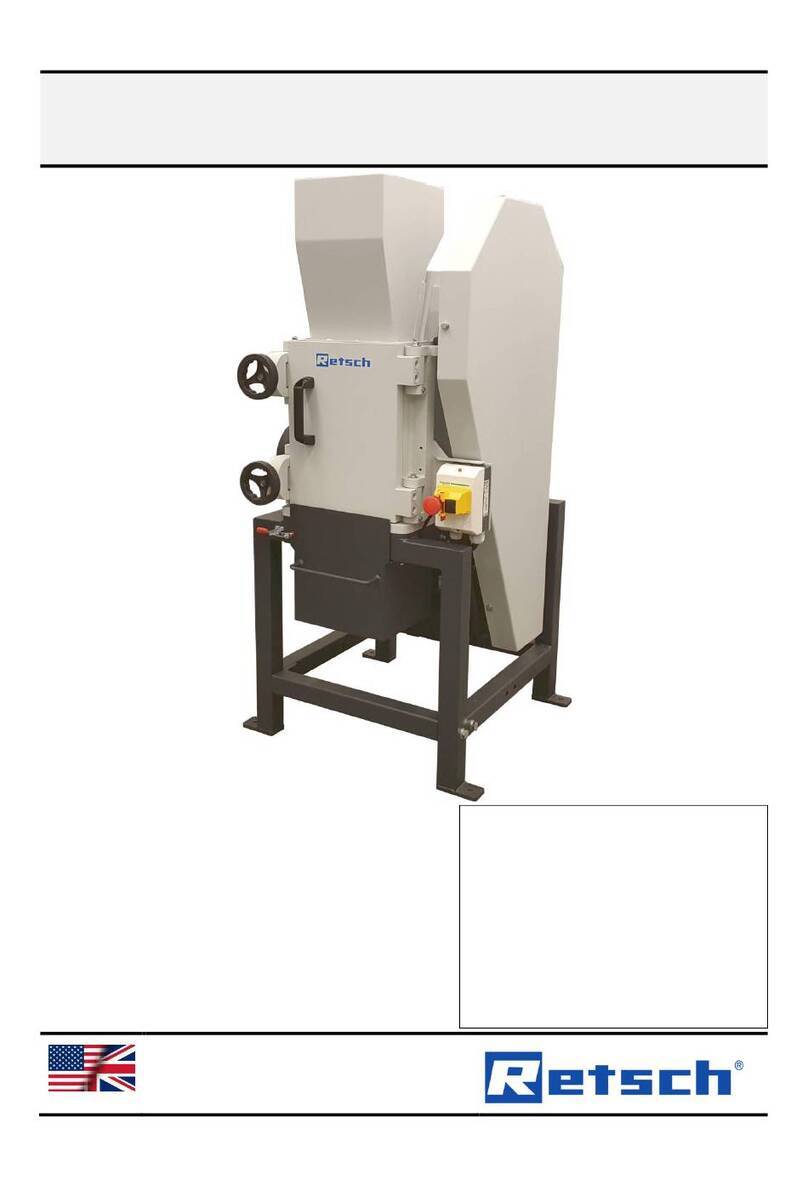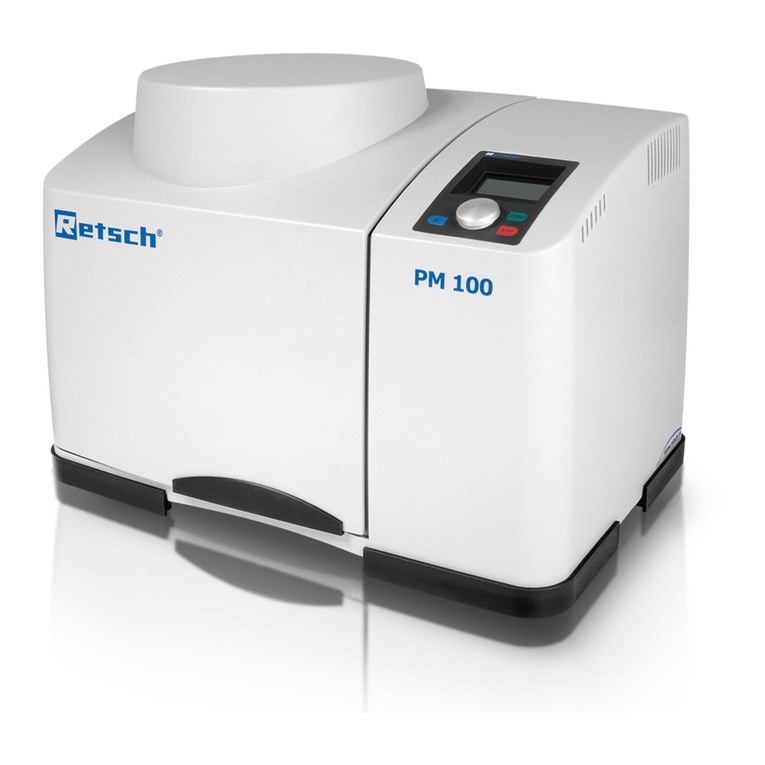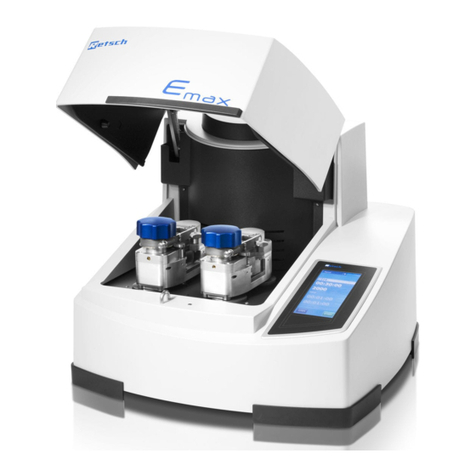6.5.2 Filling the grinding jar................................................................................................................... 43
6.5.3 Closing the grinding jar................................................................................................................ 43
6.6 Inserting the Grinding Jar ................................................................................................................ 44
6.6.1 Opening the grinding jar support ................................................................................................. 45
6.6.2 Inserting the grinding jar .............................................................................................................. 45
6.7 Grinding process.............................................................................................................................. 46
6.7.1 Starting the grinding process....................................................................................................... 47
6.8 Removing the sample material........................................................................................................ 48
7Device control...................................................................................................................................... 50
7.1 Menu interface on the touchscreen ................................................................................................. 51
7.2 Function elements ........................................................................................................................... 52
7.3 Menu navigation .............................................................................................................................. 54
7.4 Main menu....................................................................................................................................... 55
7.5 Controlling the grinding process...................................................................................................... 56
7.6 Starting the grinding process........................................................................................................... 56
7.7 Pausing the grinding process .......................................................................................................... 57
7.8 Stopping the grinding process......................................................................................................... 57
7.9 Program mode................................................................................................................................. 57
7.9.1 Select a Program......................................................................................................................... 59
7.9.2 Edit a Program............................................................................................................................. 60
7.9.3 Save a Programme...................................................................................................................... 61
7.9.4 Delete a Programme.................................................................................................................... 61
7.10 Cycle mode...................................................................................................................................... 62
7.10.1 Selecting the cycle................................................................................................................... 63
7.10.2 Editing the cycle....................................................................................................................... 64
7.10.3 Saving the cycle....................................................................................................................... 66
7.10.4 Deleting the cycle .................................................................................................................... 66
7.11 System settings ............................................................................................................................... 67
7.11.1 myRetsch................................................................................................................................. 70
7.11.2 Remote .................................................................................................................................... 70
7.11.3 Signalling device...................................................................................................................... 71
7.11.4 Brightness................................................................................................................................ 72
7.11.5 Date and time........................................................................................................................... 72
7.11.6 Software Version ..................................................................................................................... 72
7.11.7 Operating Hours....................................................................................................................... 72
7.11.8 Serial number........................................................................................................................... 72
7.11.9 Software Update...................................................................................................................... 72
7.11.10 Service Environment................................................................................................................ 73
7.11.11 Log file ..................................................................................................................................... 73
8Error Messages and Information Notes............................................................................................ 73
8.1 Error Messages ............................................................................................................................... 73
8.2 Information Notes ............................................................................................................................ 74
9Servicing .............................................................................................................................................. 75
9.1 Cleaning........................................................................................................................................... 75
9.1.1 Cleaning the outside of the device .............................................................................................. 76
9.1.2 Cleaning the collecting tray.......................................................................................................... 76
9.1.3 Cleaning the inside ...................................................................................................................... 76
9.1.4 Cleaning the grinding jar.............................................................................................................. 76
9.1.5 Cleaning the grinding balls .......................................................................................................... 76
9.2 Maintenance .................................................................................................................................... 77
9.3 Wear ................................................................................................................................................ 77
9.4 Returning for repair and maintenance............................................................................................. 78
10 Accessories ......................................................................................................................................... 79
11 Disposal................................................................................................................................................ 80
